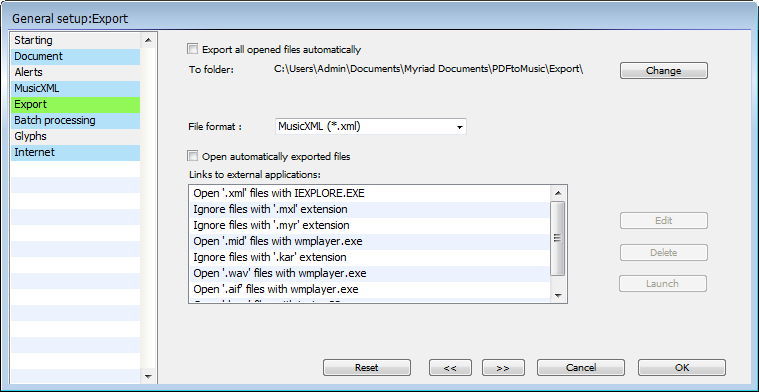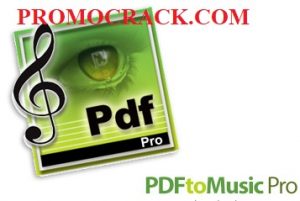

The third difference comes from the used character set.

Pdftomusic documentation code#
By analogy, recovering the music from an image of a music sheet can be as challenging as recovering the HTML source code from the screenshot of a website. Notice that there is no proper equivalent in text recognition. The second major distinction is the fact that while an OCR system does not go beyond recognizing letters and words, an OMR system is expected to also recover the semantics of music: The user expects that the vertical position of a note (graphical concept) is being translated into the pitch (musical concept) by applying the rules of music notation. This means that while the alphabet consists of well-defined primitives (e.g., stems, noteheads, or flags), it is their configuration – how they are placed and arranged on the staff – that determines the semantics and how it should be interpreted. The biggest difference is that music notation is a featural writing system. Optical music recognition has frequently been compared to Optical character recognition. In a library, an OMR system could make music scores searchable and for musicologists it would allow to conduct quantitative musicological studies at scale. It is relevant for practicing musicians and composers that could use OMR systems as a means to enter music into the computer and thus ease the process of composing, transcribing, and editing music. Optical music recognition relates to other fields of research, including computer vision, document analysis, and music information retrieval.

Relation of optical music recognition to other fields of research The availability of smartphones with good cameras and sufficient computational power, paved the way to mobile solutions where the user takes a picture with the smartphone and the device directly processes the image. The first commercial OMR application, MIDISCAN (now SmartScore), was released in 1991 by Musitek Corporation. These researchers developed many of the techniques that are still being used today. Įarly research in OMR was conducted by Ichiro Fujinaga, Nicholas Carter, Kia Ng, David Bainbridge, and Tim Bell. In 1984, a Japanese research group from Waseda University developed a specialized robot, called WABOT (WAseda roBOT), which was capable of reading the music sheet in front of it and accompanying a singer on an electric organ. Due to the limited memory of early computers, the first attempts were limited to only a few measures of music. Optical music recognition of printed sheet music started in the late 1960s at the Massachusetts Institute of Technology when the first image scanners became affordable for research institutes. First published digital scan of music scores by David Prerau in 1971


 0 kommentar(er)
0 kommentar(er)
